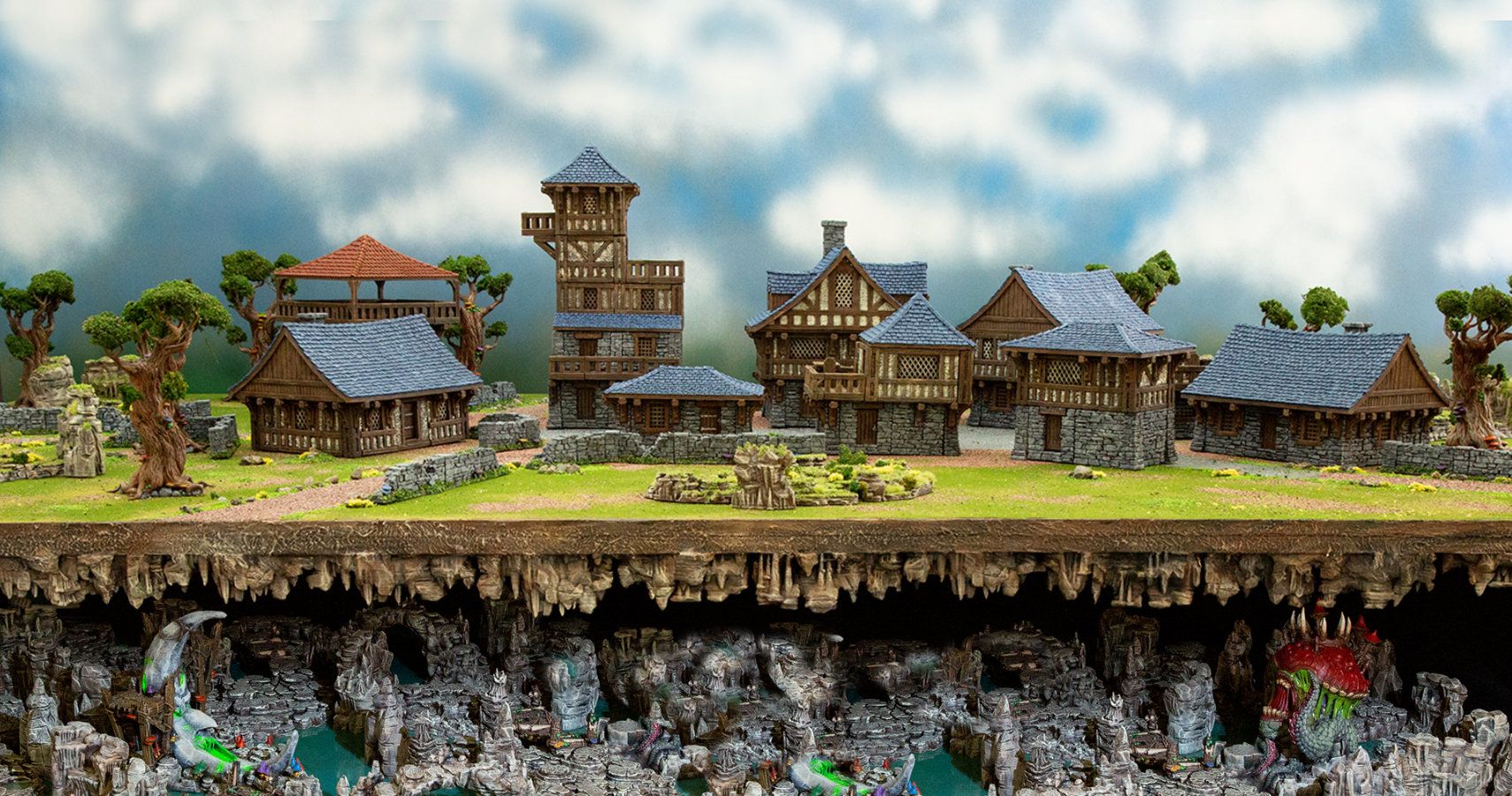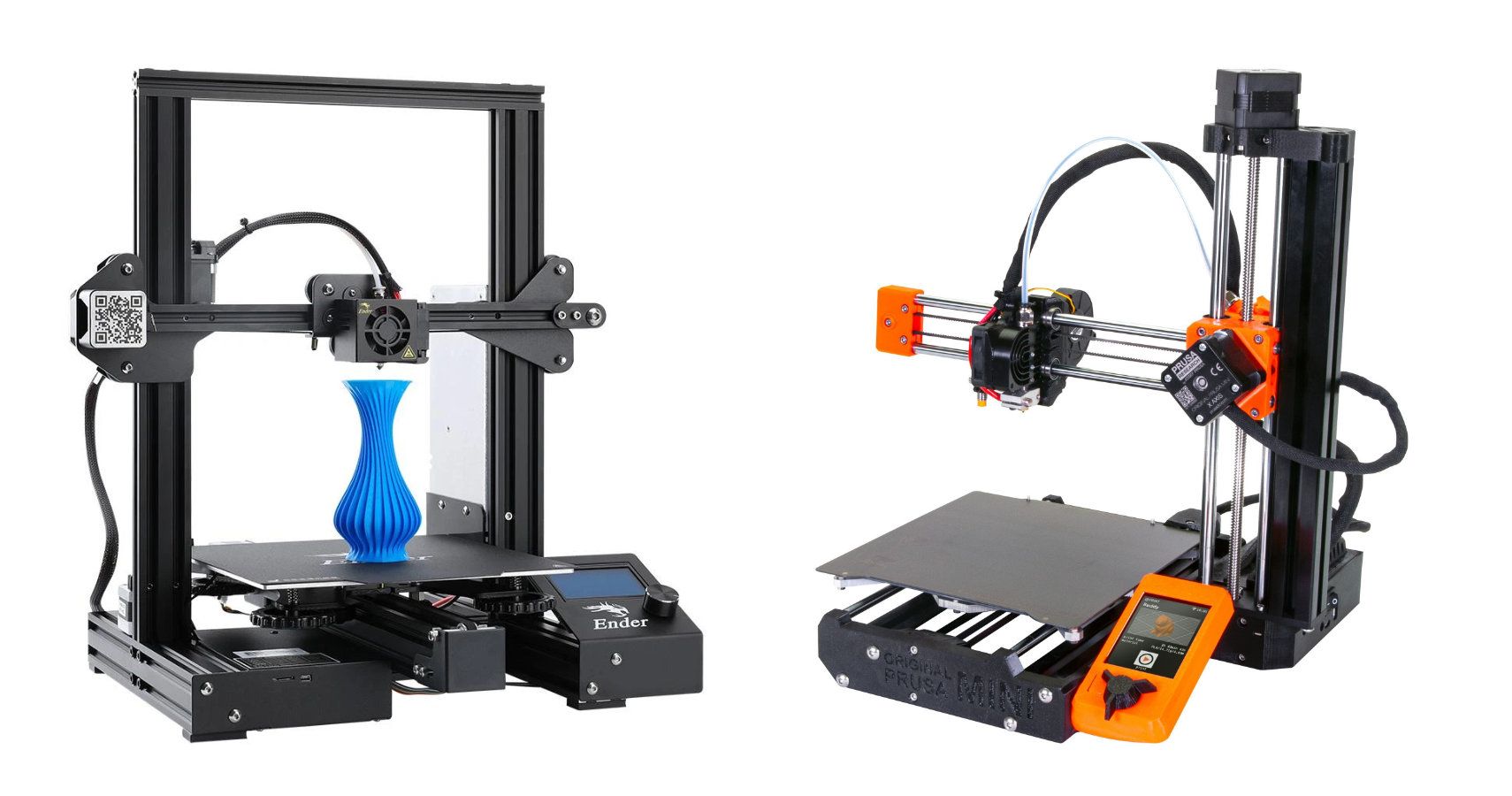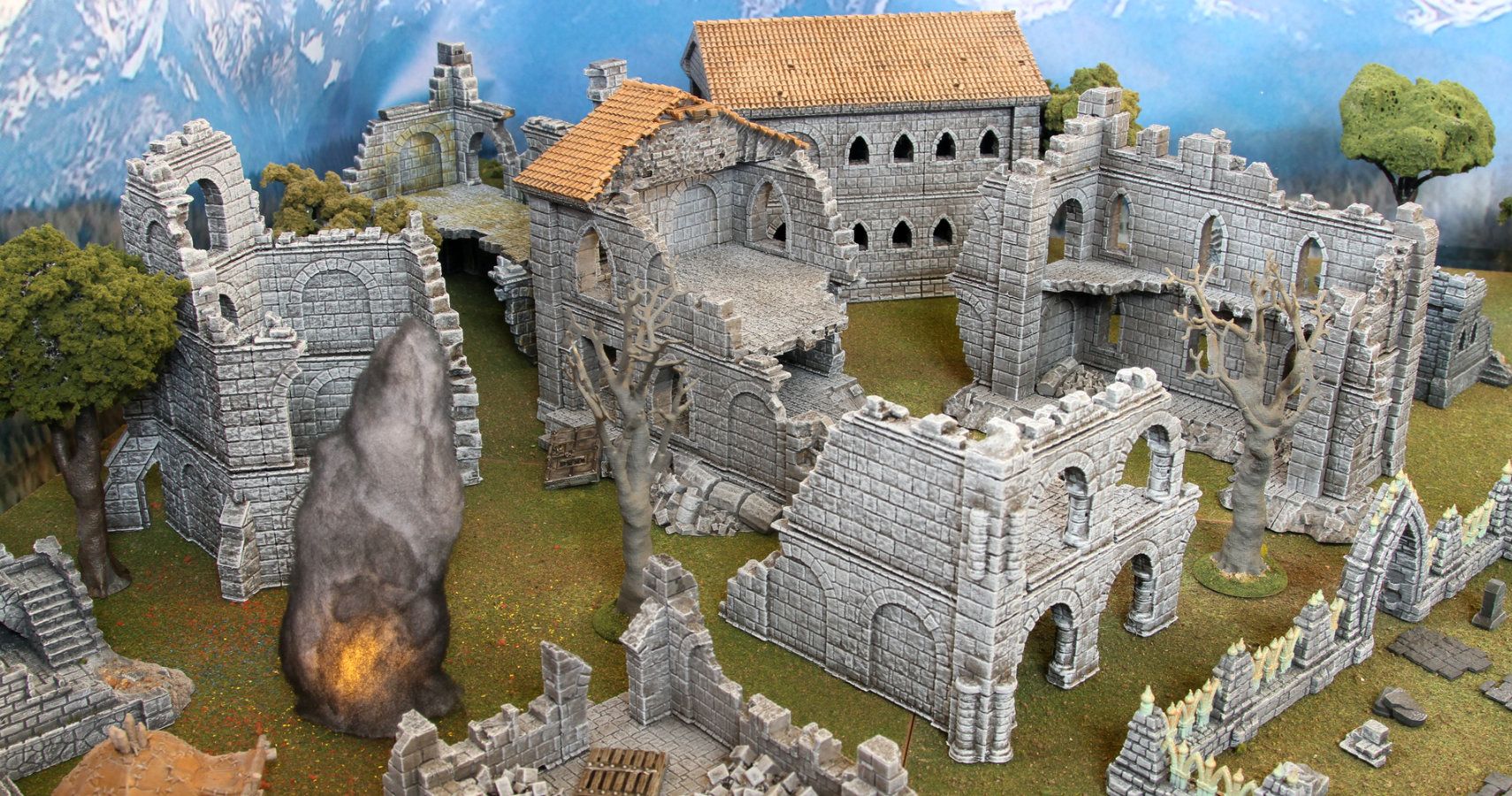Have you ever sat opposite your foe as you line up your Warhammer armies to do battle and thought, “I wish I had some buildings to make the battlefield look more interesting?” Fret no more, for today we look at how 3D printing terrain can improve your games. In our introduction, we took a look at what 3D printing is and the two main methods used by hobby/home 3D printing. For terrain printing, you can use either SLA or FDM, but this writer recommends FDM printing for a variety of reasons.
FDM printing is typically cheaper as the filament is a lot cheaper than resin to manufacture. Expect to pay $20+ for a 1KG roll depending upon plastic type. PLA will be the cheapest and is also the easiest to print. Another advantage is the print area or volume. A typical machine will have a print volume similar to a sheet of A4/letter paper. And a height to match. You can even find bigger print areas if needed, but most models can be cut into smaller chunks and glued together later. An important point here as well is that typically when you print, the model will not be solid; as part of the slicing processing you choose an infill value (10%-20% being typical), this not only saves money but also time. You will also find a wide selection of colors to choose from for your prints, and some printers are able to use more than one color, although for the best results you will want to paint the parts to look more natural.
What To Print?
This is where it gets interesting! You can print anything, as long as there is a print file available or you are able to create your own 3D models. With that said, whatever your print had to be “fit for purpose.” Sit down before starting and ask yourself what you want to print and why? Do you have a specific need? Is it a one-off? Are you a GM or a wargamer? What size do I need? All these questions will help you decide what you print.
For wargamers, the choice may seem obvious… Gothic looking structures for sci-fi wargaming, as an example. Single print models always look amazing, but if used too much you and your players could get bored with them fairly quickly. You may also find that after a few games you (and your opponent) know the model inside and out, and the advantageous shooting spot now leaves you wide open for elimination. This is where the power of 3D printing comes in. Whereas buying an injection molded kit gives you a great looking centerpiece, 3D printing not only provides this but also lets you work with small run kits that would not ordinarily be possible as well as models that are impossible to manufacture unless they were 3D printed. Add to that the reusable multi-part models that can be rebuilt (think Lego) into different structures giving you near-infinite combinations. Don’t forget scatter terrain. There is a good selection available that you can print cheaply such as boxes, and crates and drums, and in a variety of different styles. There is nothing stopping you from mixing and matching models from different designers as well. After all, why should every town or world look the same? Allowing for this localization is not possible using off the shelf kits without heavy modification.
Games masters will already be familiar with some of this through the use of 2D dungeons tiles. With 3D printing, there is a good variety of tiles available for both dungeons and building use, not to mention the aforementioned scenery that could be used for outdoor encounters. There has been a drive to standardize dungeons tiles with two competing options available for linkage of tiles: OpenLock and DragonLock. They both operate in the same way, with a small plastic clip that secures the tiles together. You will be pleased to note that there are conversion clips available to link the different systems together.
One final note on printing is size. Wargamers will want to print to the same scale as their game allows. This is typically 28mm/32mm. Most, if not all, the printable models are already scaled to this size. GMs have a harder choice ahead as there are no rules on size, just convention that may not apply. Out of convenience 28mm is the default found in commercially available models, but there is nothing stopping you from resizing everything and working in larger scales such as 72mm.
Models To Print
There are both commercially available and free models to print. Be mindful of the free models, 3D printing suffers from piracy with paid-for models often appearing on 3D printing forums. When this happens it is the artist that suffers directly, as they are often the ones selling the model, and if their revenues drop then they may no choice but to stop designing new models. Support individual designers by buying models direct from them or by joining their Patreon.
With that said, there are many free models you can print. Sites like Thingiverse, YouMagine, and Prusa Printers give designers an outlet for their models. There are typically no costs involved unless you use a print service (where they print it for you) but many do let you tip the designer. If the designer has commercially available models or a Patreon, this will usually be stated in their about page; use this if you can as they will typically receive a greater share of the donation.
You can also find commercially available models to print at Printable Scenery and Fat Dragon Games. Both specialize in dungeon tiles but have a range of buildings and miniatures available. If you are unsure if these will fit your game they have free sample packs you can download and print.
As you can see, using 3D printed terrain can enhance your playing experience as it brings a level of realism to your games. If done efficiently you can print terrain that is re-configurable allowing for different building construction or interior layouts. The hobby and challenge of 3D printing is also enjoyable in its own right, giving gamers and GMs another tool in their toolbox. 3D printing shouldn’t replace traditional hobby crafting, but when used alongside, the possibilities are endless.
Popular FDM 3D Printers
Slicer Software
Some of Our Favorite Terrain Models
- DragonLock Outdoor Terrain
- DragonLock Village
- Printable Scenery’s Scatter Terrain
- Printable Scenery’s Fantasy Ruin
- Printable Scenery’s Post-Apocalyptic
- Rampage Castle
- Terrain4Print
- Warhammer Scenery on Thingiverse
- Wargaming Terrain on Thingiverse
- OpenLock on Thingiverse
- 3D Rune on Patreon
- Aether Studios
NEXT: How 3D Printing Can Enhance Your Tabletop Games Part 3 – Printing Miniatures
Sources: Header Image by Printed Scenery



